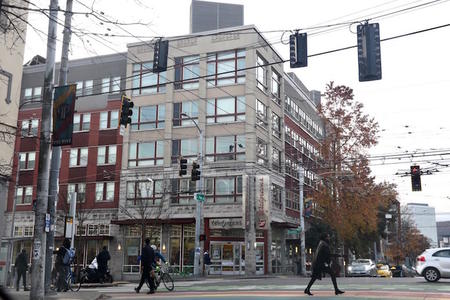Every Tuesday to Thursday, dozens stream into the food bank, on the fifth level of Pike Place Market’s parking garage. In fact, Pike Market Food Bank recently served more clients than it ever had: Last month, volunteers there handed out food and vouchers to 1,200 people in one week.
Stella Jones, the market’s food bank manager, said because of Seattle’s rising cost of living, the pantry already has been an increasingly busy place. Approximately 50 percent of its clients are elders living on fixed incomes. Now, with the federal shutdown approaching its one-month mark, some food banks are either already seeing an uptick in clients or bracing themselves for bigger crowds.
“The biggest thing we’re worried about is the SNAP benefits,” Jones said, referring to the Supplemental Nutrition Assistance Program — otherwise known as food stamps — a government benefit in danger of stalling if the shutdown continues. “We want to be a resource for those people.”
“We are anticipating if this shutdown continues, our counts will go up,” said Lester Yuh, operations director at the West Seattle Food Bank. “And we’re a really busy food bank anyway.”
Some food bank workers who spoke with Crosscut cautioned that if the number of clients do go up during the government shutdown, some facilities may be stretched to their limits. Serving more clients would require a greater outpouring of donations in either food — think stable, nonperishable items like canned chicken, salmon and rice — or cash, which would give food banks more purchasing power to buy meat, vegetables and other items at a discounted price.
Jordan Rubin, director of communications at Northwest Harvest, a nonprofit food bank distributor operating statewide in Washington with a network of 375 food banks, said some pantries have started to see new people coming to them, such as furloughed federal workers. Some food banks reported an increase even before federal workers missed their first paycheck, Rubin said.
Others are worried the government will soon discontinue their food stamp benefits. One food bank —White Center Food Bank — reported seeing 20 new households a day out of concerns that SNAP benefits may be disrupted.
“It’s the uncertainty that all these households are seeing,” Rubin said, referring to the government shutdown and when exactly it will end. “Luckily, people are thinking ahead.”
The federal shutdown is also having other impacts on the food supply, Rubin said. Some farmers may not be receiving the federal grants and loans they need. Food safety inspectors also have been furloughed, though some are returning to work next week so that the Food and Drug Administration can begin to resume inspections of some high-risk foods at manufacturing and other processing plants.
“There are all these trickle-down effects that the shutdown is having that is causing a strain on the food system,” Rubin said. “The overall safety is in jeopardy.”
Basically “if you eat meat or you eat produce, you could be affected by the shutdown.”
Kelly Stowe, a spokesperson for the Washington State Department of Social and Health Services, said although food-stamp benefits are continuing until the end of February, she already has been fielding questions from the public.
Recipients of the benefit are receiving their February food stamps early — on Jan. 20. That means those benefits need to last until March.
“Some recipients — those who get their benefits on the 20th of each month, for example — will be going two months between SNAP disbursements,” said Babs Roberts, director of the DSHS Community Services Division. “People will want to ensure that the benefits they are receiving now last as long as possible.”
What happens after that is anyone’s guess, but Stowe said some are already anxious about how many more people might be in danger of going hungry if government functions don’t resume by March. The U.S. Department of Agriculture has already reported it lacks the funds to cover SNAP benefits through that month.
“I think we’re all in uncharted water here,” said Christina Wong, director of public policy and advocacy at Northwest Harvest. “We’re not able to answer questions with any certainty for folks who are already facing uncertainty and stress in their life.”
In Washington state alone, 900,000 children and adults could be affected, the vast majority of whom do not receive any other kind of cash benefit but simply need a little help to cover daily and monthly expenses, Stowe said. Most families receive a very modest sum from the SNAP program — an average daily benefit of $7.30.
“People are scrambling for alternatives right now,” said Thomas Reynolds, chief executive officer of Northwest Harvest. “Society breaks us into a society of haves and have-nots, but I think it’s much more fluid than that. Many of us live paycheck to paycheck.”





